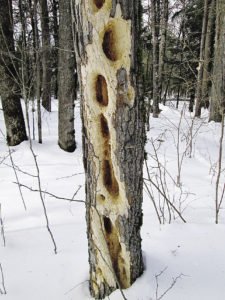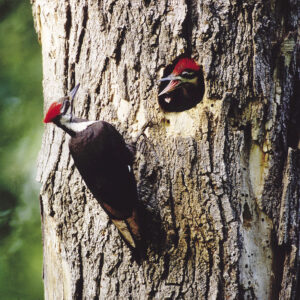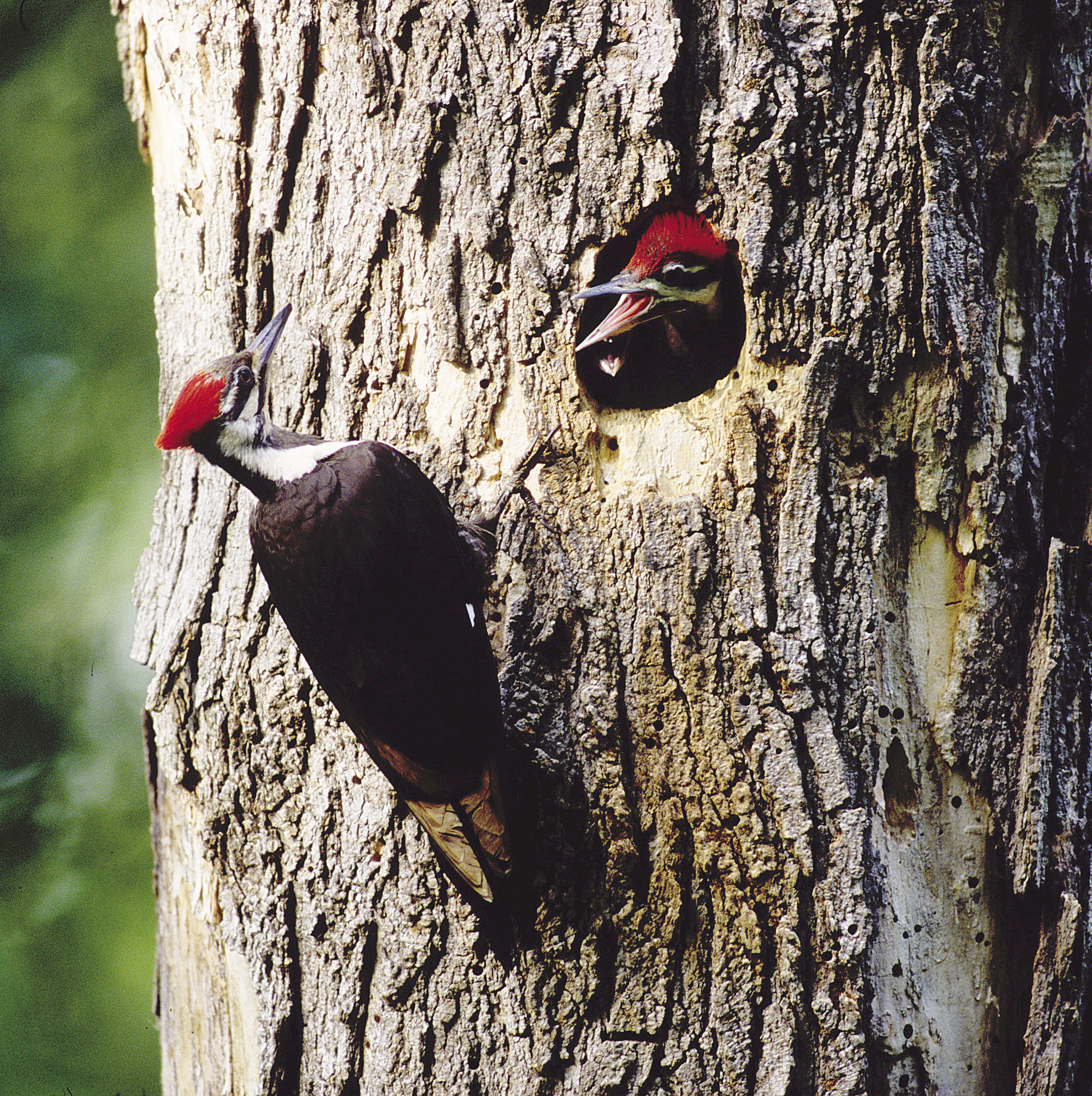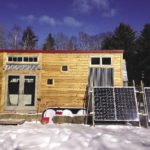North Shore—Throughout the snow-packed forest in the Northwoods, piles of wood chips can be found at the base of rotting trees; pileated woodpeckers have been busy this winter. Large, oblong feeding holes riddle the trunks of punky snags. Signs of the pileateds’ presence far outnumber the actual number of birds in an area. Despite their relative rarity, these large, charismatic birds have an outsized impact on their ecosystem.
The rectangular feeding holes we see so commonly in the woods are just one example. Through their forceful foraging habits, pileated woodpeckers feed more than just themselves. Hairy woodpeckers specialize in gleaning smaller insects from pileated trees. Heart rot fungi take advantage of the wounds that pileated woodpeckers open up. The fungi accelerate decomposition that creates important habitat for even more organisms. Likewise, fungi of all kinds go to work on the piles of wood chips, and return important nutrients to the ecosystem. And through their voracious appetites, woodpeckers play an important role in moderating insect outbreaks.

The largest feeding holes of pileated woodpeckers can provide shelter for brown creepers, chickadees, and other little birds looking for a cozy spot to spend the night. Bigger animals, though, seek out the pileateds’ deeper nest cavities. Each year in early spring, male pileated woodpeckers begin to excavate new nest cavities. The entrance takes the oblong form that we’re familiar with, but the overall hole is 10-24 inches deep. To achieve this, woodpeckers choose a nest tree with a large diameter, a solid circumference and slightly punky center. Toward the end of excavation, the females assist, and they may take turns climbing into the hole, working away from the inside, and then tossing wood chips out the entrance. Some chips remain inside as the sole nest lining for their young.
If you’ve ever marveled at the size of the holes, or the size of the wood chips that came out of the holes, you may wonder how a bird the length of our forearm can inflict that kind of damage on a tree without inflicting similar damage on itself. Just like any craftsman, a woodpecker has a set of specialized tools; starting with the pileated’s long, chisel-like beak. At its base, bristly feathers filter sawdust out of its nose. At its tip, layers of hard bone and flexible tissue distribute force away from its bird brain. A long, barbed tongue gets put to good use in fishing carpenter ants out of cavities, but this complex of bone, muscle and cartilage does even more. The hyoid apparatus, as it’s called, splits into two horns, wraps all the way around the skull, and creates a safety harness for its head.
Using these features, in addition to serious neck muscles, woodpeckers are able to take 99.7 percent of the strain energy created through drilling and dissipate it throughout their body. The 0.3 percent of the strain energy that affects their head is converted to heat energy. This could cause a woodpecker’s brain to overheat and result in a different kind of damage, which is why woodpeckers take frequent, short breaks while they are pecking.
[td_insert_ad]
Although significant time and effort are invested in a nest cavity—each one takes three to six weeks to complete—woodpeckers will not reuse the hole in subsequent years. This probably serves to protect the babies from parasites, or from mammalian predators who might remember the location from year to year.

Once a pair of pileateds abandon their nest cavity (and sometimes even before), a virtual line of squatters form outside the door. The spacious accommodations are coveted by a variety of birds and mammals, including other woodpeckers, ducks, bluebirds, flycatchers, owls, American kestrels, bats, squirrels, mice and pine martens. Roughly 70-80 species of animals have been documented reusing pileated nest holes.
On a cold night, the shelter of a tree cavity blocks the wind and provides enough insulation to increase the temperature by 40 degrees F. Birds roosting in tree cavities can see energy savings of up to 38 percent. Flying squirrels and some birds snuggle up in a fuzzy pile to share warmth. Chickadees and the pileateds themselves prefer to roost alone, even on the coldest nights. In fact, pileated woodpeckers often excavate additional roost cavities, which provide even more habitat for their neighbors.
With the amount of construction they do, and the number of species they benefit, it’s no surprise that scientists and wildlife managers consider pileated woodpeckers “ecosystem engineers.” They might be the most prolific homebuilders in the Northwoods.
Learn more about pileateds and other natural partnerships at the Cable Natural History Museum’s “Better Together” exhibit, opening on Wednesday, May 3 in Cable, Wisc.





